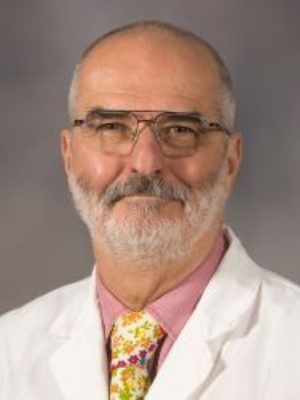Faculty
- Department of Cell and Molecular Biology Home
- About the Department
- Education
- Research
- Contact Cell and Molecular Biology
- Support the Department of Cell and Molecular Biology
- Support the Center for Immunology and Microbial Research and the Graduate Program in Microbiology and Immunology
John J. Correia, PhD
 | Professor Emeritus |
My research has focused on two broad areas including biophysical studies of macromolecular interactions by analytical ultracentrifuge (AUC) techniques (trained with Dave Yphantis at UCONN) with an emphasis on the interaction of anti-mitotic drugs like vinca alkaloids with tubulin and microtubule proteins (Postdoc with Robley Williams at Vanderbilt; AUC Facility Director since 1994). Our vinca work (1994-2010) focused on the Biothermodynamics of tubulin spiral interactions that stressed implications for translational studies and predicted clinical potencies and mechanisms of drug resistance. We pursued numerous collaborations with drugs companies that provided vinca derivatives (Eli Lilly; Pierre Fabre; Eisai) and measured comparative energetics by AUC. Two of these drugs (Vinflunine in Europe; Eribulin in the US) have made it to the clinics.
Our recent focus is on the characterization of a drug delivery system, Elastin-Like Peptide, and the hydrodynamic characterization of ELP in serum. This work started as a collaboration with a University of Mississippi Medical Center (UMMC) lab focused on xenograft animal models and testing the effectiveness of thermo-responsive ELP for drug delivery and cancer treatment. My group and collaborations are focused on the polymer physics of ELP aggregation with implications for both basic science mechanisms and translational aspects of these biophysical studies. Our current ELP studies are measuring the impact of Doxorubicin labeling of ELP and the role of osmolytes. This work entails CD and laser raman to measure structural transitions, turbidity and DLS to measure transition temperatures and construct phase diagrams, DSC to measure enthalpy, AUC and DLS to look at hydrodynamics, and SEM as a new method to look at size distributions and droplet structures.
We are also working on hydrodynamic characterization of monoclonal antibodies (mAb) in serum. This involves the development of preclinical methods to study the hydrodynamics and thermodynamics of proteins in high concentration environments like cell extracts and serum. This requires the use of the Aviv FDS to measure hydrodynamic ks and thermodynamic BM1 nonideality of solutions composed of mAbs, human serum albumin and human IgG. We performed Sedimentation Velocity and Equilibrium experiments but have found great utility in using both Synthetic Boundary and Band Sedimentation to extract concentration dependence of Diffusion coefficients.
I have run the UMMC AUC Facility for 23 years and my current collaborations include basic science (iMotifs with Randy Wadkins at Ole Miss; ELP with Nick Fitzkee at Miss State) and biotech (Cytokine receptor interactions with Janssen R&D; pre-clinical characterization of therapeutic antibodies with Boehringer-Ingelheim). Through those many collaborations I have participated in the training of numerous graduate and undergraduate students. This emphasis is further reflected in my involvement in the Gibbs Conference on Biothermodynamics (Treasurer and Member of the Board; 31st annual meeting this September) and the Mississippi Regional Biophysical Consortium (Treasurer and Board Member; 10th annual meeting this May). The mission of both of these organizations includes the mentoring and training of future biophysicists. I currently have two graduate students in my lab.


